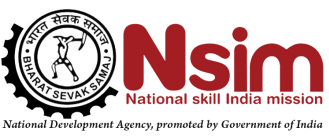About Institute of Yogic Science
A systematic Review and Analysis on Yoga Science in Management of Neuropathy pain of Non Communicable Disease.
Objective :- To systematically examine the impact of yoga as an aid in the management of neuropathic pain due to Non- communicable disease.
Design :- A Community trials – Randomized controlled study comparing the policy of offering Yoga with that of non-intervention group
Background :-The demand for clinically efficacious, safe, patient acceptable and cost-effective forms of treatment for Neuropathy is growing. Several studies have demonstrated benefit from yoga in specific neuropathic of non-communicable symptoms and a general sense of well-being.
is growing. Several studies have demonstrated benefit from yoga in specific neuropathic of non-communicable symptoms and a general sense of well-being.
According to World Health Organization (WHO) and the World Economic Forum, India will incur an accumulated loss of $236.6 billion by 2015 on account of unhealthy lifestyles and faulty diet. According to the report, 60% of all deaths worldwide in 2005 (35 million) resulted from Non-communicable diseases and accounted for 44% of premature deaths. Yoga acts on emotional and spiritual strength to reflect inwardly and directly address personal conflicts, anxieties, hopes and fears, and understands how we respond to them. It also takes time to learn how these states of mind impact directly on physical wellbeing, and how we can change this.
Participants were selected at random from various sectors of community known to be at the extremes of Non-communicable diseases. Within the categories of least deprived and most deprived, recruitment was stratified by sex and age to achieve an overall sample containing approximately equal numbers of males and females and an even distribution across the age categories from 15-25, 26-34 35–44, 45–54 and 55–64 years. Individuals were invited to attend for assessment of their medical history, risk factor status, cognitive function and psychological profile, morbidity, and disease.
Various modes of yoga intervention have been widely recommended to prevent or delay the neuropathic condition. Yoga holds promise for reducing risk factors for Neuropathy by promoting weight loss, improving vagal tone and reducing blood pressureand lipid levels.
This study aimed to assess the feasibility of implementing a 90 days yogaprogram for different adults groups who are at high risk for neuropathy. Adults were randomly assigned to the yoga intervention group and the educational group. The yoga group participated in a 3-month yoga intervention with sessions thrice per week and the educational group received general health educational materials once in every weeks. All participants completed questionnaires and had various neurological evaluationtests at baseline and at the end of3 months. Effect sizes were reported to summarize the efficacy of the intervention.








